

Vision A great engineering school that innovates for a better future
Mission To nurture holistic engineers and to address global challenges through research, innovation, inspiration and influence.



Vision A great engineering school that innovates for a better future
Mission To nurture holistic engineers and to address global challenges through research, innovation, inspiration and influence.
Looking back on the past year, there is no question that one issue above all others has dominated our lives.
COVID-19 has made 2020 a year like no other. So much has changed so quickly, pushing us all into a new and unfamiliar territory, which we have had to hurriedly adapt.
Terms like social distancing and safe management measures become part of our daily vernacular as we try to adjust to our “new normal” – and define what it actually means.
As a faculty and university, we have had to learn to adapt to new ways of working, teaching, studying and even carrying out research remotely.

To mitigate learning disruption, our teaching faculty and staff moved quickly to prepare e-learning for our many modules. I would like to thank all involved for their efforts to enable this at such short notice.
At the same time, as the pandemic spread, many of our faculty members quickly took up the call to join the fight against the virus on a range of fronts, pivoting and refocusing their research on innovative treatment and testing solutions, and ways to stem the spread of this new virus.
Their efforts in the face of a global health crisis exemplify the fundamental spirit and purpose of engineering – bringing together scientific expertise, cutting-edge technologies and human-centred design in ways that improve lives and deliver solutions to real-world problems.
More details about our faculty’s work to combat the pandemic can be found beginning on pages 8 to 10 of this report.
Beyond the pandemic, our faculty continued to apply themselves to drive forward impactful research, despite the challenges of remote working and social distancing.
More details about some of the key innovations made by our faculty over the past year can be found from pages pages 12 to 20 of this report.
On the teaching front, the past year saw the Faculty of Engineering, together with the School of Design and Environment, announce the launch of a new Common Curriculum designed to give students a more holistic learning experience.
Starting in August 2021, undergraduates will be able to enjoy greatly expanded learning pathways
under the new curriculum, which offers a more flexible, studentcentric structure for them to design their own degrees.

These changes will give students greater choice in charting their university journeys, enabling them to develop competencies across different fields. For instance, an Engineering student may now choose to major in Civil Engineering while pursuing two minors in Project Management and Architectural Studies.
The Common Curriculum has been designed in conjunction with industry leaders, to be a new and flexible approach to learning, ensuring our graduates remain adaptable and relevant in an everchanging employment market.
For more details about this exciting innovation in our teaching programmes, turn to pages 28 and 29 of this report.
Beyond the campus, our alumni continue to make waves both here in Singapore and overseas. I am pleased to see how our alumni adapted to the challenges of the pandemic, demonstrating the creativity, flexibility and innovative spirit of NUS Engineering.
One particular highlight for the past year was the emergence of PatSnap, co-founded by NUS Biomedical Engineering alumnus Jeffrey Tiong, as the first NUSsupported unicorn – a start-up valued above US$1 billion.
Above all, the story for NUS Engineering over the past year is the demonstration of resilience shown by our faculty, staff and students through all that the pandemic has thrown at us.
Looking back, I am impressed and grateful for the spirit all have shown.
As the pandemic continues to bring new challenges, the rapid transition to online teaching and testing, split-team operations, support for students, and fellow staff during these unprecedented times are some of the many examples of quick-to-adapt and resilient spirit that NUS Engineering has shown.
There will undoubtedly be further challenges to come, but at NUS Engineering we have shown we can adapt positively to unknowns and uncertainties.
In this spirit I would like to wish all our colleagues, alumni, partners and their friends and families the best of health. Stay safe and let’s look forward to a healthier and happier year ahead.
Professor Aaron Thean Dean,NUS Engineering
Professor Aaron Thean Dean
Professor Teo Kie Leong Deputy Dean Vice-Dean Research and Technology

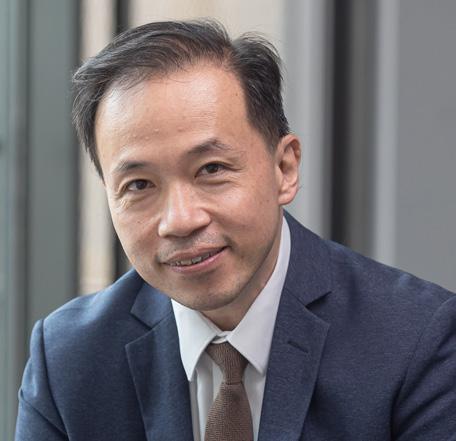
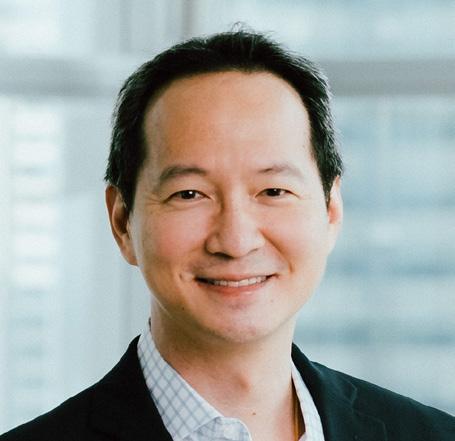
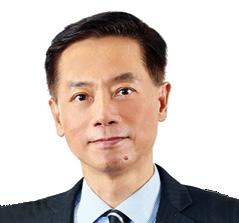
Associate Professor Martin Lindsay Buist Vice-Dean Undergraduate Programmes



Associate Professor Biplab Sikdar Vice-Dean Graduate Programmes
Associate Professor Praveen Linga Vice-Dean Communications and Outreach Office
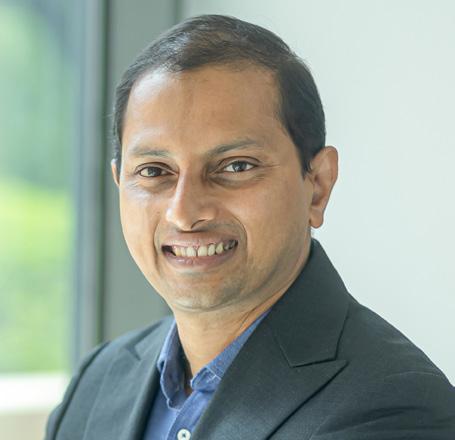

Preceded by Associate Professor Christina Lim Vice-Dean External Relations and Outreach (Up to 1 October 2020)
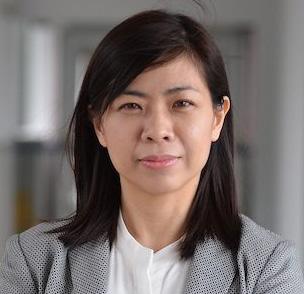
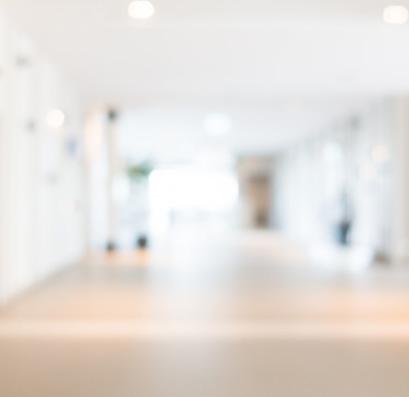
Professor Ho Ghim Wei Vice-Dean Student Life
Professor Daniel Chua Director Alumni Relations and Development
Professor Yoon Soon Fatt Vice-Dean Industry




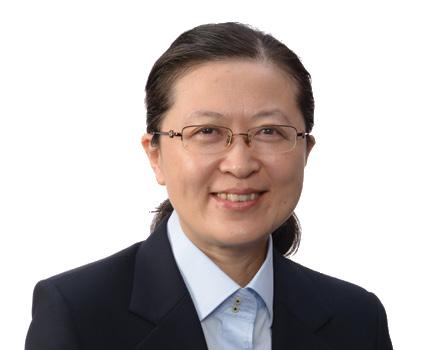

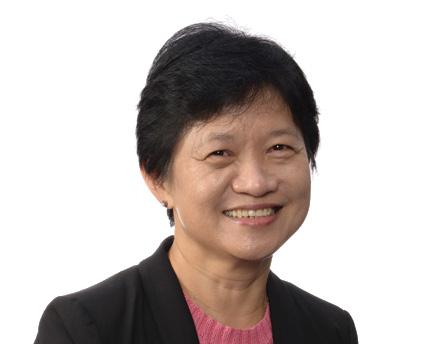

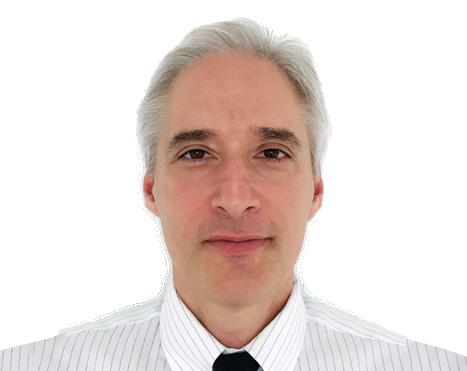



Preceded
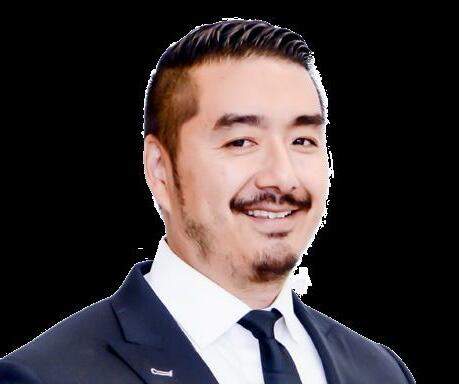
On 1 August 2017, NUS Engineering established its Faculty Advisory Board. The Board’s role is to:
• Advise on strategic directions of NUS Engineering
• Advise and assist in outreach to industry, public and professional bodies to advance engineering research and education
• Advise and assist in promoting engineering as an exciting, appealing and meaningful career

• Act as honorary ambassadors to promote NUS Engineering’s interests and perspectives to industry and government networks
1. Mr Peter Ho (Chairman)
Chairman Urban Redevelopment Authority Senior Advisor Centre for Strategic Futures, Strategy Group, Prime Minister’s Office 2. Dr Cheong Koon Hean Chief Executive Officer Housing and Development Board (HDB)


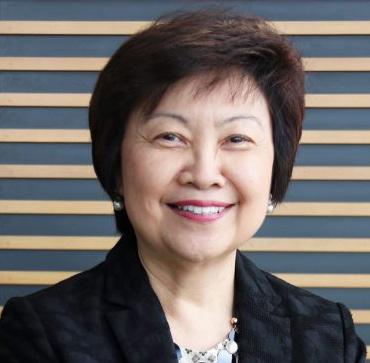
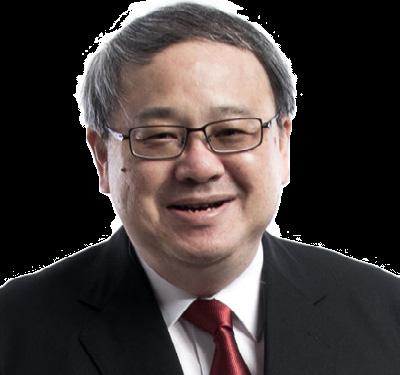

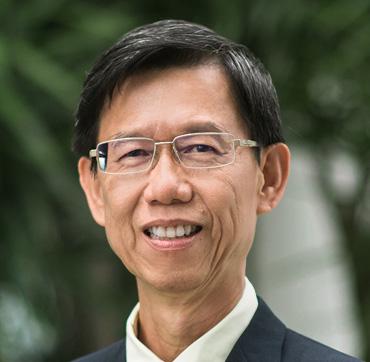
Mr Gan Seow Kee Chairman and Managing Director ExxonMobil Asia Pacific Pte Ltd

Er Tan Seng Chuan Managing Director Tembusu Asia Consulting Pte Ltd
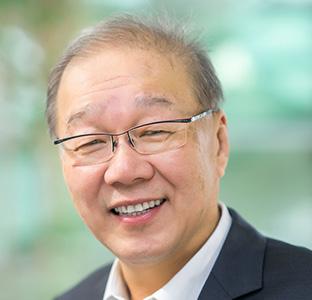
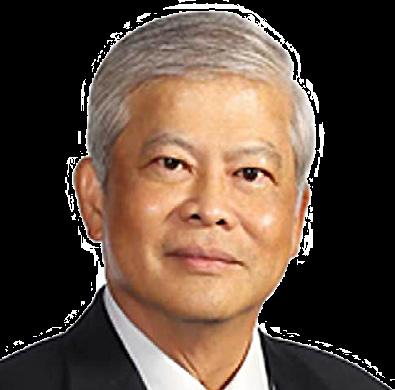
Prof Low Teck Seng Chief Executive Officer National Research Foundation 6. Mr Quek Gim Pew Chief Defence Scientist Ministry of Defence 7. Mr Seah Moon Ming
Chairman
SMRT Corporation Ltd 8. Mr Russell Tham
President
New Enterprises and Ventures, Singapore Technologies Engineering Ltd


Dr Kurichi Kumar Head of Technology Asia Pacific, Rolls-Royce Singapore Pte Ltd
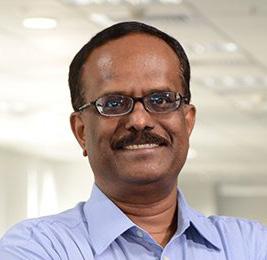

The scale and speed with which the COVID-19 pandemic swept the world demands urgent action. Among the academic community at NUS, the pandemic has catalysed a research revolution with interdisciplinary teams of engineers, scientists and health workers coming together to design and develop innovative solutions at an unprecedented pace. Notably, our faculty, researchers and students played key roles in driving innovations to meet challenges posed by COVID-19 on a broad range of fronts covering treatment, testing and infection prevention.
Investigators from Biomedical Engineering at the N.1 Institute for Health have been using Artificial Intelligence (AI) to rapidly process the various possible treatment combinations and identify the best results for patients with COVID-19.
Using a platform called IDentif. AI (pronounced “identify”), initially developed to find better treatments for cancer, the multidisciplinary team has been able to take 12 promising drugs and process billions of possible combinations and dosages at a speed that would be impossible using traditional medical trials.
“The strength of IDentif.AI is that we can perform one experiment and come out with a list of drug combinations for treatment within days,” said Professor Dean Ho, Head of Biomedical Engineering, and Director of the N.1 Institute for Health. “And if patients do not respond well to the first combinations of drugs, we can derive new combinations within days to re-optimise their care.”
Using a machine about the size of a household toaster, a team at the NUS Institute for Health Innovation & Technology (iHealthtech) led by Professor Lim Chwee Teck from Biomedical Engineering has developed a system for testing patients quickly, easily and on location. This avoids the need for samples to be sent to specialised lab testing facilities, saving time, effort and cost.
The Epidax system is built around a specially designed chip and microfluidic technology that uses a smaller sample than standard diagnostic tests and returns results in around an hour. It was developed and tested from scratch in less than two months, despite the challenges researchers faced working under the restrictions imposed by Singapore’s Circuit Breaker.
Epidax, a rapid testing system for COVID-19 that gives results in an hour, is one of the several innovations NUS Engineers have contributed to the fight against the global pandemic.


One challenge hampering efforts to expand mass testing has been a global shortage of nasal swabs. To address this, NUS Engineers joined forces with medics and industrial designers to rapidly develop new processes to mass produce swabs cheaply and accurately.
One kind of swab, named Python, is produced using 3D printing techniques developed by the NUS Centre for Additive Manufacturing (AM.NUS). 3D printing the swabs allows far faster production at scale than would be possible under traditional manufacturing techniques.
The team developed a special double helix design for the swab tip that has excellent fluid absorption properties and causes minimal pain for the patient when a sample is extracted from the back of the nasal cavity.
The Python swab was designed, developed, and had a patent filed in less than two months. Two local Singapore companies are now mass producing the swabs.
Prof Freddy Boey (centre, showing the swabs), and (from left) Dr Alfred Chia, Assoc Prof David Allen, and Assoc Prof Yen ChingChiuan are part of two NUS teams that developed three nasopharyngeal swab designs for COVID-19 testing.
Facial masks have become a vital tool in preventing transmission of COVID-19. But for frontline medical and care workers, most commonly available masks are uncomfortable to wear for extended periods or do not provide maximum protection.
NUS researchers have designed three nasopharyngeal swabs for COVID-19 testing: (from left) IM2, IM3 and Python.
Using the latest 3D printing techniques and advanced materials, a team led by Professor Jerry Fuh from Mechanical Engineering attached to the NUS Centre for Additive Manufacturing (AM.NUS) is working with healthcare workers to rapidly prototype a comfortable, ultra secure, reusable mask.


3D printing enables the team to rapidly produce and test design variations, whilst the advanced printing machines available at NUS allow the developers to test multimaterial combinations that deliver the optimum combination of comfort and effectiveness.
Computer rendering of the 3D-printed masks.
Without effective barrier protection, treating patients infected with highly contagious pathogens like COVID-19 exposes healthcare workers to considerable risk. Procedures such as installing and removing tubes for assisted breathing can be especially risky.
To reduce the chances of infection spreading, NUS Engineering researchers led by Professor Freddy Boey, Deputy President (Innovation and Enterprise) and NUS Department of Materials Science and Engineering, played a pivotal role in a collaboration with doctors and frontline caregivers to develop a portable and easy to clean shield that is placed around the patient’s head during medical procedures.
Transparent, foldable and similar in appearance to a laboratory glove box, the DART, short for Droplet and Aerosol Reducing Tent, is equipped with an air extractor and filter at the top to further reduce the chances of infected droplets leaking out.
Working in close collaboration, the DART team developed the shield in less than two months, with prototypes being tested in hospitals across Singapore.

The multidisciplinary team from NUS and NUH took less than two months to develop the Droplet and Aerosol Reducing Tent (DART).
Ateam led by Assistant Professor Shao Huilin from the NUS Institute for Health Innovation & Technology (iHealthtech) and Biomedical Engineering is modifying its enVision test kit – developed in 2018 –to detect the COVID-19 virus in as little as 30 minutes.

EnVision is a versatile platform that can conduct specific and sensitive screening and detection for a range of diseases, from infectious diseases and high-prevalence infections, to various types of cancers. Tests can be done at the point-of-care, so that disease monitoring or treatment can be administered in a timely manner to achieve better health outcomes.
Furthermore, results are easily visible –the assay turns from colourless to brown if a disease is present, and the intensity of the colour is proportional to the amount of the pathogen that is present.
Asst Prof Shao Huilin (centre) and team modified their enVision test kit to detect COVID-19 virus in under 30 minutes.
Read more about this online.
https://cde.nus.edu.sg/ nus-engineers-jointhe-battle-againstcovid-19/

The momentum of research remained unabated at NUS Engineering despite the pandemic and various safe management measures. During the year, our faculty, researchers and students pushed on to make numerous groundbreaking discoveries that promise higher productivity, a greener future and improved, healthier lives.
Aflexible, adhesive and conductive organic polymer ideal for use as dry medical electrodes has been developed in a crossdepartmental collaboration between Engineering researchers.
Compared to conventional “wet” electrodes which rely on a gel or liquid to detect biosignals – and which can dry out over time to give lower quality signals – the team says the dry electrodes are stretchable, conductive and do not require adhesive to attach to the patient’s skin. They also do not wear out, allowing for longterm reuse while delivering consistent signal quality.

Developed by Dr Zhang Lei and Associate Professor Ouyang Jianyong from Materials Science and Engineering and Assistant Professor Ren Hongliang and PhD candidate Kirthika Senthil Kumar from Biomedical Engineering, the team named the new polymer PWS.

Dry yet robust, the PWS polymer can be cast into different shapes for various applications in patient diagnosis, physiotherapy and rehabilitation. There is also potential for it to be used in the development of more responsive human-machine interaction interfaces.
When tested in a clinical setting, the PWS electrodes detected tiny changes in the heartbeat of a patient diagnosed with atrial fibrillation (irregular heartbeat), and captured muscle strength readings of a patient with muscular dystrophy. These outcomes affirm the suitability of the PWS electrodes for longterm patient monitoring.
(From left to right) Assoc Prof Ouyang Jianyong, Dr Zhang Lei, PhD candidate Kirthika Senthil Kumar, and Asst Prof Ren Hongliang.
Read more about this online. https://cde.nus.edu.sg/ durable-medical-electrodesfrom-a-materialsbreakthrough/
A prototype of the new dry PWS electrodes.
Amultidisciplinary research team has developed an add-on to wearable health monitoring gadgets to better inform users about their health.
The novel sweat pH monitor, which can be easily integrated into existing fitness trackers or smartwatches at a low cost, is able to continuously measure and monitor the acidity or alkalinity level of a user’s sweat along with heart rate and oxygen concentration.
The team behind the monitor includes Mr Ananta Narayanan Balaji, a doctoral student from Electrical and Computer Engineering, doctoral student Ms Chen Yuan and Assistant Professor Shao Huilin from the NUS Institute for Health Innovation & Technology (iHealthtech) and Biomedical Engineering, and Dr Wang Bo and Professor Peh Li-Shiuan from NUS Computing.
Working in tandem with existing pulse oximeter chips in fitness trackers and smartwatches that measure the heart rate and oxygen saturation levels of users, the pH sweat sensor changes colour when it comes into contact with different sweat pH, matching the recording capabilities of the pulse oximeter.
Besides an accuracy of about 90%, the pH watch is energy efficient. While the sensor does not require an independent power source, the pH sensing algorithm uses less than 0.01% of the total power consumption of a smartwatch. It also only requires 20 KB of Random Access Memory (RAM) for data processing.
(From left to right) Dr Wang Bo, Ms Chen Yuan, Mr Ananta Narayanan Balaji and Asst Prof Shao Huilin came up with the pH Watch that informs users about their health from their sweat pH.

By integrating the custom-made pH sensor (middle) and pH sensing algorithm into fitness trackers or smartwatches with existing built-in pulse oximeter, the pH Watch can simultaneously monitor the pH value of a user’s sweat, heart rate and blood oxygen saturation values.
Read more about this online. https://cde.nus.edu.sg/a-lowpower-highly-responsive-andreusable-sweat-ph-monitor/

Associate Professor Praveen Linga from Chemical and Biomolecular Engineering and his team have devised a way to convert natural gas into gas hydrates or Solidified Natural Gas (SNG) – a non-explosive solid that can be easily transported and stored long-term.

Using a low-toxicity additive mixture which is made mostly of water, the conversion process from gas into solid can be completed in just 15 minutes. The new process converts high volumes of gas into pellets consisting of molecules of natural gas trapped in ice-like “cages” formed by water molecules.
These pellets can be easily transported and stored for later use in conditions no different to standard domestic freezers.
The discovery opens the way to economical long-term storage of natural gas, helping to avoid power supply disruptions and boosting the energy security of natural gas importers like Singapore.
Read more about this online. https://cde.nus.edu.sg/icethat-burns-a-fast-safe-andeconomical-way-to-storenatural-gas/
“Our breakthrough can really be put into perspective when you consider that it takes millions and millions of years for gas hydrates to form in nature, yet with our correct addition of secret ingredients to the system in small quantities, the same process can be effected in the laboratory in a matter of minutes.”
– Dr Gaurav Bhattacharjee, Chemical and Biomolecular Engineering Assoc Prof Praveen Linga (left) from Chemical and Biomolecular Engineering and Research Fellow Dr Gaurav Bhattacharjee found an economical way to keep natural gas.Associate Professor Yan Ning, Assistant Professor Zhou Kang and their team at Chemical and Biomolecular Engineering have created a new process which upcycles waste materials into high-value amino acids.

The team first applied chemical processes to waste materials to convert them into a substance that can be “digested” by microbes before specially engineered strains of bacteria are introduced to convert the substance into higher-value products like amino acids. Compared to conventional methods used for producing amino acids, which require sugars as the substrate, this method makes use of food and agricultural waste as raw materials and reduces costs significantly.
One initial application developed by the researchers turns waste prawn and crab shells into an essential ingredient for a drug to treat Parkinson’s disease. The process also can be adapted to convert food waste to Proline, a joint health supplement which

boosts the formation of healthy collagen and cartilage.
Looking further ahead, the research team says the new process could be applied to turning carbon dioxide, one of the most prolific greenhouse gases, into ethanol and eventually even into labgrown beef. With the potential to be applied to different waste materials, the process can be tailored to cater to different types of waste and target end products.
Waste prawn shells and wood chips are converted into high-value chemicals through the novel process.
Read more about this online. https://cde.nus.edu.sg/ marrying-chemical-andbiological-processes-toturn-waste-into-treasure/
– Assoc Prof Yan Ning, Chemical and Biomolecular Engineering
“Our novel chemical-biological integrated workflow offers a general pathway to produce a variety of high-value organonitrogen chemicals. Given that these chemicals are found in a vast array of commercially valuable pharmaceuticals, pigments and nutrients, we are excited to expand our research and develop new methodologies to produce value-added chemicals from other abundant, locally available substrates found in Singapore.”The team led by Assoc Prof Yan Ning (left) and Asst Prof Zhou Kang (right) has developed an integrated upcycling process to produce high-value amino acids from waste materials.

Aresearch team led by Professor Barbaros Özyilmaz, Head of Materials Science and Engineering, have synthesised the world’s first one-atom-thick amorphous material. Previously thought to be impossible, the discovery of monolayer amorphous carbon (MAC) could settle a decades-old debate about exactly how atoms are arranged in amorphous solids, and open up a range of potential applications.
This major research breakthrough could be of commercial value for batteries, semiconductors, membranes and many more uses.
The team grew the material and studied its properties and potential areas of application. Other work on imaging and theoretical simulations was carried out by research teams at universities in Japan, China and the USA.
“With MAC, we have shown for the first time that fully amorphous materials can be stable and free-standing in single atomic layers. Amorphous materials are of great technological importance, but surprisingly, they remain poorly understood from a basic science point of view,” said Prof Özyilmaz.
Prof Barbaros Özyilmaz and his team have created the world’s first atomically thin amorphous carbon film. The amorphous structure has widely varying atom-to-atom distance, unlike crystals.
Read more about this online. https://cde.nus.edu.sg/nusscientists-create-worlds-firstmonolayer-amorphous-film/
Assistant Professor John Ho and a team from the NUS Institute for Health Innovation & Technology (iHealthtech) and Electrical and Computer Engineering have developed a smartphone-powered suit capable of providing athletes with physiological data such as their posture, running gait and body temperature while they are out on the field.
The smart suit is made up of web-like circuitry with the inductive patterns acting as hubs at strategic locations. Custom-made sensors placed at those hubs transmit data back to the smartphone and are powered by the smartphone’s near-field
communications (NFC) chip, removing the need for batteries. This reduces a significant amount of weight while enabling the collection of data from multiple areas on the body.
Potential applications include athletic performance optimisation, clinical diagnosis of spinal disorders and round-the-clock health monitoring.
Moving forward, the team plans to develop new sensors to increase the range of data collected and work with professional athletes to help them monitor their physiological signals during training.
Read more about this online. https://cde.nus.edu.sg/nus-develops-smartsuit-wirelessly-powered-by-a-smartphone/

Assoc Prof He Jianzhong (left), Research Fellow Dr Wang Qingkun (right) and team discovered the Thauera sp . strain SND5 after isolating and testing various strains of bacteria from wastewater samples.

Ateam led by Associate Professor He Jianzhong from Civil and Environmental Engineering have discovered a new strain of bacterium that has the ability to remove nitrogen and phosphorus from sewage.
The strain, called Thauera sp. strain SND5, is not only able to remove nitrogen and phosphorus faster than other tested microbes, it also offers significant energy savings compared to conventional nitrogen removal processes of nitrification and denitrification.
With some existing sewage treatment methods, greenhouse gases such as nitrous oxide are released. Through converting ammonia into harmless nitrogen gas, the microbe solves this problem while concurrently removing phosphates present in sewage water.
This discovery significantly reduces the high operational costs and emission of greenhouse gases associated with traditional wastewater treatment methods.
Researchers have created a whole new library of atomically thin, two-dimensional (2D) materials using a novel and powerful approach of engineering the composition of transition metal dichalcogenides.
Materials that are atomically thin offer a platform to explore a wide range of intriguing physical properties and could provide many future applications. ‘Transition metal dichalcogenide monolayers’, for example, are atomically thin semiconductors which are tipped to bring about the next generation of transistors, solar cells, LEDs, and more.
Transition metal dichalcogenide monolayers take the form MX2, with ‘M’ being a metal atom from the transition block of the periodic table and ‘X’ being a chalcogen atom (such as S, Se, or Te). However, fine-tuning the composition of 2D transition metal dichalcogenides to make new materials other than the standard compounds is usually challenging.
The team led by Professor Stephen J. Pennycook from Materials Science and Engineering and Professor Loh Kian Ping from NUS Chemistry, has synthesised and characterised for the first time an atlas of atomically thin materials based on inserting the same metal atom between two transition metal dichalcogenides monolayers.

This insertion is known as intercalation, hence the researchers have named this new library ‘ic-2D’, to denote a class of materials where the atoms ‘intercalate’ themselves into the gap between the layers of crystals.
Read more about this online. https://cde.nus.edu.sg/amultitasking-microbe-to-purifywastewater/
Read
https://cde.nus.edu.sg/a-new-libraryof-atomically-thin-2d-materials/
A magnified image captured by the device used to perform STAR assay. Different fluorescent intensities reflect the length variations in individual telomere molecules.
An important early indicator of cancer and other age-related diseases is abnormalities in telomeres – tiny protective caps located at the ends of chromosomes.

Assistant Professor Cheow Lih Feng from Biomedical Engineering and the NUS Institute for Health Innovation & Technology (iHealthtech) has developed a novel method to measure the length of individual telomeres in less than three hours.
Conventional methods for telomere measurements in clinical settings are often timeconsuming, require skilled operators, and yet offer imprecise information required to accurately diagnose or determine telomere abnormalities. In contrast, with Asst Prof Cheow’s Single Telomere Absolute-length Rapid (STAR) assay, the telomere maintenance mechanism in cancer cells can be accurately determined with a high level of detailed information.
The combination of rapid workflow, scalability and single-molecule resolution of the newly developed system enables the use of telomere length distribution as a biomarker in disease diagnosis. It will be particularly useful for diagnosing telomere maintenance mechanisms within clinical time scales, to determine personalised, therapeutic or preventive strategies for patients.
Read more about this online. https://cde.nus.edu.sg/newsystem-to-profile-telomeresin-less-than-3-hours/
Asst Prof Benjamin Tee (centre), Mr Wang Guanxiang (left) and Dr Tan Yu Jun (right) worked on the electronic light-emitting, self-healing material.

Assistant Professor Benjamin Tee and a team from the NUS Institute for Health Innovation & Technology (iHealthtech) and Materials Science and Engineering have developed a new stretchable material which when used in light-emitting capacitor devices, enables highly visible illumination at much lower operating voltages.
In addition, the material is resilient to damage due to its self-healing properties.
Named HELIOS (which stands for Healable, Low-field Illuminating Optoelectronic Stretchable), devices enabled with the
new material can turn on at voltages that are four times lower, and achieve illumination that is more than 20 times brighter than existing stretchable lightemitting capacitors.
The low power consumption also means that HELIOS can achieve a longer operating lifetime, be utilised safely in human-machine interfaces, and be powered wirelessly to improve portability.
HELIOS is also resistant to tears and punctures. The reversible bonds between the molecules of the material can be broken and reformed, thereby allowing the material to self-heal under ambient environmental conditions.
Read more about this online. https://cde.nus.edu.sg/new-electronicmaterial-for-wearables-and-soft-robots/
Led by Professor Massimo Alioto from Electrical and Computer Engineering, a team of researchers has developed an innovative technique that allows the transfer of bits (the basic unit of information in computing) across a silicon chip up to five times more efficiently than standard setups.

This breakthrough is advantageous for applications such as machine learning, where many processing cores
called “neurons” are constantly exchanging data, and require ever-increasing levels of power. Such power consumption must be significantly reduced to allow for extended battery life in next-generation smartphones, smartwatches, and other mobile devices that require higher computing performance.
The invention could pave the way for a new generation of intelligent high-performance systems, while fitting the limited power budget of battery-powered systems.
“Our silicon chip demonstration sets a new standard for power efficiency, without modifying the building blocks, such as transmitters and receivers, that are typically used in these setups, allowing its easy adoption in existing designs. Given that power, performance and cost are all fundamental drivers of artificial intelligence applications, our invention simplifies the integration of next-generation intelligent systems.”
Read more about this online.
https://cde.nus.edu.sg/five-times-more-efficientdata-transfer/
– Prof Massimo Alioto, Electrical and Computer Engineering
Dr Viveka Konandur (left) and Prof Massimo Alioto (right) testing the network-on-chip in a machine learning application.Ateam of researchers led by Associate Professor Duong Hai-Minh and Professor Nhan Phan-Thien from NUS Department of Mechanical Engineering have developed the world’s first aerogels made from scrap rubber tyres.

Most aerogels are brittle with a tendency to fragment and pulverise. Rubber aerogels on the other hand can spring back to their original shape after compression.
The new rubber aerogels demonstrate remarkable properties – they are extremely light, highly absorbent, very durable, and very efficient at trapping heat and sound. For example, compared to commercial foam, the aerogels are not only lighter and stiffer, but also up to 27% more effective in absorbing sound.
By upcycling waste rubber into products of higher commercial
value, this new technology promotes a wider use of scrap tyres, and offers an eco-friendly way to recycle waste rubber which is non-biodegradable.
As a next step, the team is looking to work with industry partners to commercialise and scale up the technology. They will also be conducting further studies to enhance the performance of the rubber aerogels, explore other applications as well as the use of other types of waste materials for conversion into aerogels.
Assoc Prof Duong Hai-Minh (front row, first from left) and Prof Nhan PhanThien (front row, centre), developed the world’s first aerogels made from scrap rubber tyres.
Read more about this online. https://cde.nus.edu.sg/the-worldsfirst-aerogels-made-from-scraprubber-tyres/
markets
are huge. For example, vehicle noise and thermal comfort are vital in vehicle designs – the global automotive heat and sound insulation solution markets are expected to reach US$3.2 billion by 2022. In addition, the global oil spill management market is expected to reach US$182.7 billion by 2025.”
– Prof Nhan Phan-Thien, Mechanical Engineering
“Potential
of aerogels

As a result of the pandemic and strict travel restrictions, many of the international competitions that our students used to participate in were either postponed or scaled down. Despite these challenging circumstances, our students continued to apply their creativity, skills and learning to deliver innovative solutions that improve lives.

Kenny Chen Weixiang from Electrical Engineering had co-founded two companies even before his graduation.
The first, Market Boy, an online delivery service for wet market produce; and the second, Phoray, a distributor of ultraviolet sterilisation devices. In both cases, the business were prompted by a desire to help solve problems caused by the COVID-19 pandemic.

Market Boy grew out of a concern for the future of his parents’ chicken stall in West Coast Market after the COVID-19 circuit breaker began in April 2020 and sales began to fall. To attract more customers, Kenny started a Facebook page where customers could order chicken from the stall for delivery.
As Market Boy took off, Kenny noticed the widespread use of liquid hand sanitisers as well as other cleaning products and the resulting increase in plastic waste. This spurred him to co-found Phoray in June 2020 with a friend from NUS Business School – to provide UVC ultraviolet light sanitisation products and services to safely, quickly and efficiently sterilise a range of items and surfaces with no waste.
Leveraging the technical expertise built up during his studies, Kenny secured sales with NUS and NTU laboratories, as well as a number of local hotels who were looking to sterilise equipment as well as high-touch items like room keycards.
Now, fresh out of studies and with the experience of founding two businesses under his belt, Kenny is looking to future ventures and opportunities. In addition to an upcoming traineeship with Siemens, he is discussing new projects with his business partners and planning an extended trip to China next year.
The range of ultraviolet sterilising products from Phoray.
Engineering alumni Ricky Guo Ziming and Aaron Ramzeen developed a wearable sensor to assist in knee physiotherapy, using proprietary sensor technology and data analytics to monitor the patient’s knee movements during at-home exercise sessions and throughout everyday activities.
Named KIMA, the invention comprises a flexible lightweight sensor attached to the side of the knee, tracking motion as the patient goes about their daily routine. Information collected can be accessed via an app to help doctors monitor the patient’s recovery and recommend appropriate exercises. The app also gives the patient real-time coaching for their physiotherapy.


KIMA saw its co-inventors named as Singapore National Winners of the 2020 James Dyson Award, an international award recognising current and recent students from design and engineering schools for innovative designs that solve real-world problems. The duo was also shortlisted in the James Dyson Award International Top 20.

KIMIA is a wearable
or rehabilitation.
The third-generation product is getting regulatory approval and awaiting market launch.
Engineering alumni Ricky Guo Ziming (left) and Aaron Ramzeen are coinventors of KIMIA and Singapore National Winners of the 2020 James Dyson Award. knee movement tracker for patients undergoing physiotherapy
Our graduates and alumni may have left the school, but their ties with us continue to deepen. Besides empowering them a strong start in realising their career aspirations, we keep abreast of their growth over the years and celebrate their achievements.
The Annual Engineering Alumni Awards recognise the accomplishments and contributions of exemplary Engineering alumni. This year, three of our alumni were recognised for their outstanding achievements.
Although we were unable to celebrate their awards at the annual Engineering Alumni Gala Dinner due to COVID-19 restrictions, we extend our heartfelt congratulations to the Annual Engineering Alumni Awards 2020 winners.
Distinguished Engineering Alumni Award: Mr Ngien Hoon Ping, Chief Executive Officer (Supply Chain Business) of FairPrice Group.

Outstanding Engineering Young Alumni Award: Ms Eng Se-Hsieng, Senior Vice President of SkyLab Services.

Mr Tai Xu Hong, Director and a Co-founder of Momentus Research and WOW Kampung.
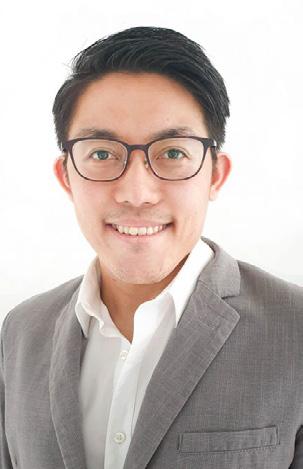 (From left to right) Mr Ngien Hoon Ping, Ms Eng Se-Hsieng and Mr Tai Xu Hong.
(From left to right) Mr Ngien Hoon Ping, Ms Eng Se-Hsieng and Mr Tai Xu Hong.
PatSnap, a startup founded by NUS alumni Jeffrey Tiong and Guan Dian, has secured US$300 million in Series E funding. This brought PatSnap’s value over US$1 billion to become the first NUS-supported unicorn.

PatSnap provides businesses with market intelligence and patent insights through their global patent analytics database and search and visualisation software tools.
Co-founder Jeffrey Tiong, a Biomedical Engineering alumnus, had the idea for PatSnap while he was on an NUS Overseas College (NOC) internship in Bio Valley (Philadelphia) in 2005. Tasked to search for technical information on patents during his internship with
a medtech company, he found the process to be messy and difficult despite his training in biomedical engineering. That experience gave him the inspiration to build his own patent and technical intelligence search engine.
He co-founded PatSnap after graduating in 2007, with incubation support from NUS Enterprise. Guan Dian, an NUS Computing alumnus with NOC experience in Silicon Valley, helped to build the brand’s presence in the Chinese market.
Today, PatSnap has about 10,000 customers, including Dyson and Spotify, and employs more than 700 employees in Singapore and its regional headquarters in London and Toronto.
PatSnap co-founders Jeffrey Tiong (left) and Guan Dian (right). (Photo: PatSnap)
Starting August 2021, students joining Engineering will be able to enjoy greatly expanded learning pathways with the launch of a new undergraduate curriculum, which includes a Common Curriculum jointly developed with the School of Design and Environment and a more flexible, student-centric structure for students to design their own degrees.
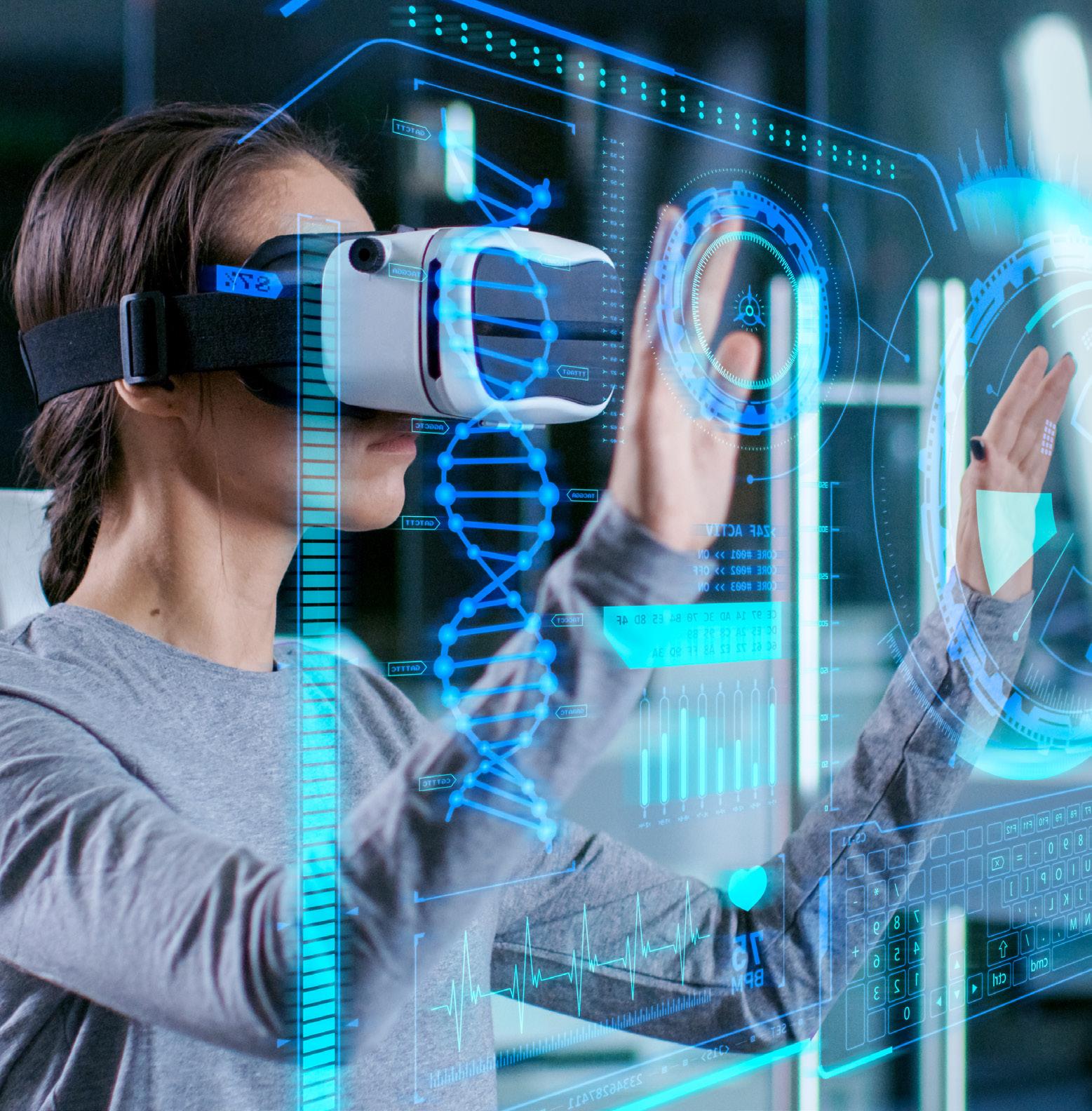
For students applying to programmes in Engineering, these changes will mean greater choice, breadth and flexibility in charting their university journeys. They can take courses from both schools seamlessly, and develop competencies across different fields. For instance, an Engineering student may choose to major in Civil Engineering while pursuing two minors in Project Management and Architectural Studies, and complete a Bachelor’s degree in four years.
The Common Curriculum for the Faculty of Engineering (FOE) and the School of Design and Environment (SDE) integrates knowledge and skill sets relevant to the professional training offered by both schools.
The Common Curriculum across the two schools is being launched alongside a refreshed General Education curriculum at NUS – a university-wide initiative, designed to give all students a more holistic learning experience and the opportunity to contribute to community projects.
Professor Aaron Thean, Dean of FOE, said, “This is a great opportunity for us to reimagine engineering education to nurture engineers who can go ‘broad’ and ‘deep’. We are increasing the learning pathways for students and also injecting non-traditional engineering courses for our students to develop new skills that are required to solve complex real-world problems.”
Students who prefer the traditional engineering professional tracks will
continue to have the option of developing deep expertise in their chosen fields. But at the same time, the new curriculum opens the way to emergent subject combinations that have not been possible to date, such as Electrical Engineering and Industrial Design.
Associate Professor Martin Buist, FOE Vice Dean of Undergraduate Programmes, said, “The new Common Curriculum for FOE and SDE has been designed, in conjunction with industry leaders, to be a new and flexible approach to learning, ensuring our graduates remain adaptable and relevant in an ever-changing employment market. Building on the synergies between FOE and SDE, the new curriculum allows students to effectively build their own degree, preserving the traditional specialist options whilst also opening virtually unlimited pathways for students to experience a crossdisciplinary education.”
Professor Ho Teck Hua, NUS Senior Deputy President and Provost, said the Common Curriculum opens up “many exciting possibilities” for students.
“The FOE and SDE have a lot in common. In our everyday life for instance, we are witnessing a convergence of engineering and design – sleek smartphones and consumer electronics, electric vehicles, as well as current net-zero and emerging net-positive energy buildings, just to name a few.

“Therefore, our training for engineers, designers and built environment professionals must evolve. FOE and SDE collaboratively created a distinctive Common Curriculum that takes students out of their silos to embrace the intersection of different disciplines. An architecture student, for example, will learn about artificial intelligence which will add value to his/her professional training.”
“This is a great opportunity for us to reimagine engineering education to nurture engineers who can go ‘broad’ and ‘deep’. We are increasing the learning pathways for students and also injecting non-traditional engineering courses for our students to develop new skills that are required to solve complex real-world problems.”
– Professor Aaron Thean, Dean Faculty of Engineering
Class
B Tech 29 Biomedical Engineering 627 Chemical Engineering 968 Civil Engineering 509 Computer Engineering 683 Electrical Engineering 781 Engineering 33 Engineering Science Programme 126 Environmental Engineering 161 Industrial and Systems Engineering 303 Materials Science and Engineering 280 Mechanical Engineering 1,383 Total 5,883
Research grants awarded to NUS Engineering (Excluding research scholarship)
Fiscal year
FY2016/2017
FY2017/2018
FY2018/2019 FY2019/2020 FY2020/2021 Grand total
215,267,281 118,719,854 184,648,445 140,474,290 112,745,626
Research grants and scholarships awarded in FY2020/2021
External research grants 82,460,938
External research scholarships 3,258,915 Moe research grants 30,284,688 Moe research scholarships 15,708,493 Grand total 131,713,034
Number of citations (in 5-year intervals)
Citing years
2010-2014 2011-2015 2012-2016 2013-2017 2014-2018 2015-2019 2016-2020
14,621 19,741 16,175 24,715 29,056 36,829 41,999
Times cited
Average citations per paper (in 5-year intervals)
2010-2014 2011-2015 2012-2016 2013-2017 2014-2018 2015-2019 2016-2020
Citing years 1 2 3 4 5 6 7 8 9
Number of papers (in 5-year intervals)
years
2010-2014 2011-2015 2012-2016 2013-2017 2014-2018 2015-2019 2016-2020
4.97 6.02 5.27 6.87 7.53 8.81 9.53
Citations per paper
2,939 3,278 3,068 3,600 3,861 4,179 4,408
Number of papers
NUS ENGINEERING
NATIONAL UNIVERSITY OF SINGAPORE 9 Engineering Drive 1 Level 7, Dean’s Office Singapore 117575